-
 Bitcoin
Bitcoin $117500
2.15% -
 Ethereum
Ethereum $3911
6.19% -
 XRP
XRP $3.316
10.79% -
 Tether USDt
Tether USDt $1.000
0.01% -
 BNB
BNB $787.2
2.24% -
 Solana
Solana $175.2
4.15% -
 USDC
USDC $0.9999
0.00% -
 Dogecoin
Dogecoin $0.2225
8.40% -
 TRON
TRON $0.3383
0.28% -
 Cardano
Cardano $0.7868
6.02% -
 Stellar
Stellar $0.4382
9.34% -
 Hyperliquid
Hyperliquid $40.92
7.56% -
 Sui
Sui $3.764
7.63% -
 Chainlink
Chainlink $18.48
10.66% -
 Bitcoin Cash
Bitcoin Cash $582.1
1.88% -
 Hedera
Hedera $0.2601
6.30% -
 Avalanche
Avalanche $23.33
4.94% -
 Ethena USDe
Ethena USDe $1.001
0.02% -
 Litecoin
Litecoin $122.3
2.04% -
 UNUS SED LEO
UNUS SED LEO $8.969
-0.27% -
 Toncoin
Toncoin $3.339
0.86% -
 Shiba Inu
Shiba Inu $0.00001287
4.30% -
 Uniswap
Uniswap $10.43
7.38% -
 Polkadot
Polkadot $3.861
5.08% -
 Dai
Dai $1.000
0.02% -
 Bitget Token
Bitget Token $4.513
3.41% -
 Monero
Monero $267.7
-6.18% -
 Cronos
Cronos $0.1499
4.14% -
 Pepe
Pepe $0.00001110
5.15% -
 Aave
Aave $284.9
8.28%
The Pros and Cons of Holding an ETH ETF
An ETH ETF offers regulated, stock-like exposure to Ethereum’s price without direct ownership, simplifying access but limiting staking and control.
Aug 08, 2025 at 04:36 am
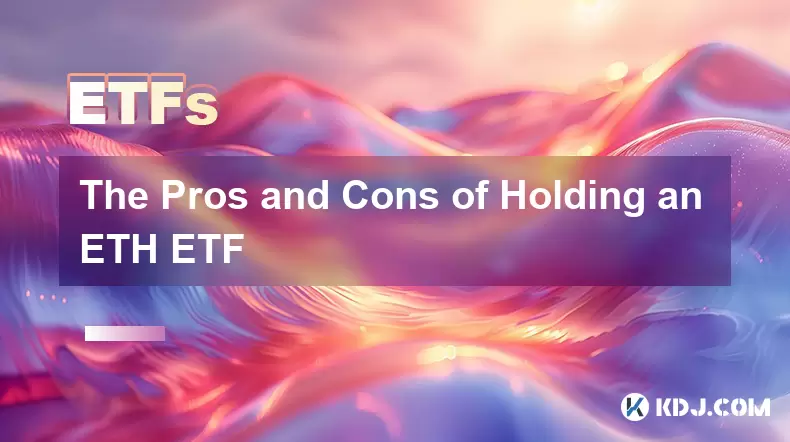
What Is an ETH ETF?
An ETH ETF (Ethereum Exchange-Traded Fund) is a financial product traded on traditional stock exchanges that aims to track the price of Ethereum (ETH) without requiring investors to directly own the cryptocurrency. These funds are structured so that investors buy shares representing a stake in a trust or fund that holds ETH or ETH-related assets. The primary appeal lies in offering exposure to Ethereum’s price movements through a regulated, accessible vehicle familiar to traditional investors. Unlike purchasing ETH on a crypto exchange, an ETH ETF allows entry via brokerage accounts, simplifying compliance, custody, and tax reporting.
Advantages of Investing in an ETH ETF
One major benefit is regulatory oversight. ETH ETFs, once approved by bodies like the U.S. Securities and Exchange Commission (SEC), operate under strict reporting and auditing standards, increasing investor confidence. This oversight reduces the risk of fraud and market manipulation compared to unregulated crypto exchanges.
Another advantage is accessibility. Retail investors who are unfamiliar with digital wallets, private keys, or blockchain technology can gain exposure to Ethereum through familiar platforms like Fidelity or Charles Schwab. This lowers the entry barrier significantly.
- Liquidity improves as ETFs trade on major stock exchanges during market hours, allowing for easier buying and selling.
- Tax efficiency is enhanced in some jurisdictions where capital gains treatment for ETFs is clearer than for direct crypto holdings.
- Institutional adoption becomes more feasible, as pension funds and asset managers often avoid direct crypto ownership due to custody and compliance concerns.
Risks and Drawbacks of an ETH ETF
Despite the benefits, ETH ETFs come with notable limitations. A primary concern is indirect ownership. Investors in an ETH ETF do not own actual Ethereum; they own shares in a fund. This means they cannot use their investment for staking, decentralized finance (DeFi), or interacting with smart contracts—key utilities of native ETH.
Another risk involves fees and expense ratios. ETFs charge management fees, which eat into returns over time. While direct ETH holders only pay network or exchange fees when transacting, ETF investors pay ongoing fees regardless of performance.
- Tracking error may occur if the ETF does not perfectly mirror ETH’s price due to operational lags or custodial issues.
- Custody risk remains relevant—although the fund holds the ETH, its security depends on the custodian’s reliability.
- Limited control over private keys means investors are subject to the fund’s governance and redemption policies.
How to Buy and Monitor an ETH ETF
Purchasing an ETH ETF follows standard brokerage procedures. Investors need a brokerage account that supports ETF trading. The process involves:
- Logging into the brokerage platform and searching for the ETH ETF by its ticker symbol (e.g., $ETHE or $EETH).
- Reviewing the fund’s prospectus, expense ratio, and holdings disclosure.
- Placing a market or limit order through the trading interface.
- Confirming the transaction and monitoring the position in the portfolio dashboard.
To track performance, investors can compare the ETF’s price movement against the spot price of Ethereum on platforms like CoinGecko or CoinMarketCap. Many ETF issuers publish daily holdings reports, showing the amount of ETH backing the shares. It’s critical to check these regularly to ensure the fund maintains full reserves.
Differences Between an ETH ETF and Direct ETH Ownership
Understanding the structural differences is essential for informed decision-making. When holding direct ETH, investors have full control over their assets. They can transfer, stake, or use ETH in dApps. In contrast, an ETH ETF offers passive price exposure only.
- With direct ownership, users manage their own private keys, ensuring self-custody.
- ETH ETF shareholders rely on third-party fund managers and custodians.
- Staking rewards are not passed through in most ETF structures, meaning investors miss out on yield generation.
- On-chain activity, such as voting in governance proposals or participating in token launches, is impossible with ETF shares.
Moreover, tax treatment can differ. In some countries, direct crypto transactions may trigger taxable events upon transfer, while ETF sales are treated like stock disposals. Investors must consult local regulations to understand implications.
Current ETH ETF Offerings and Regulatory Status
As of now, several ETH ETFs have launched in jurisdictions outside the U.S., including Canada and Europe. For example, the Purpose Ethereum ETF (AETH.B) in Canada was the first to market. These funds typically hold ETH in cold storage and issue redeemable shares.
In the United States, the SEC has been cautious. While spot Bitcoin ETFs were approved in 2024, ETH ETFs face scrutiny due to Ethereum’s classification debate—whether it is a security or commodity. Some issuers, like VanEck and Grayscale, have filed proposals, but approval remains pending. Investors should verify the regulatory status of any ETF in their country before investing.
- Check the fund’s regulatory filings with the relevant authority.
- Confirm whether the ETF is physically backed (holds actual ETH) or uses derivatives.
- Review the auditor and custodian to assess trustworthiness.
Frequently Asked Questions
Can I stake my ETH if I invest through an ETF?
No. Since ETF investors do not own the underlying Ethereum, they cannot participate in staking. The fund may or may not stake the ETH it holds, and any rewards are typically retained by the fund or used to offset fees, not distributed to shareholders.
How do I know if an ETH ETF actually holds Ethereum?
Reputable ETH ETFs publish daily or weekly holdings reports on their official websites. These documents detail the amount of ETH held in custody. Investors should cross-check these figures with the number of outstanding shares to verify full backing.
Are ETH ETFs safer than buying ETH on an exchange?
They offer different types of safety. ETH ETFs reduce platform risk (e.g., exchange hacks) by using regulated custodians. However, they introduce counterparty risk through fund managers and custodians. Direct exchange holdings require users to secure their own wallets, adding personal responsibility.
Do ETH ETFs provide exposure to Ethereum 2.0 upgrades?
Yes, in terms of price. If the ETF holds ETH, it benefits from price appreciation related to network upgrades. However, ETF investors do not participate in the consensus mechanism or receive staking rewards, even if the underlying ETH is staked by the fund.
Disclaimer:info@kdj.com
The information provided is not trading advice. kdj.com does not assume any responsibility for any investments made based on the information provided in this article. Cryptocurrencies are highly volatile and it is highly recommended that you invest with caution after thorough research!
If you believe that the content used on this website infringes your copyright, please contact us immediately (info@kdj.com) and we will delete it promptly.
- FTT Token's Wild Ride: Creditor Repayments vs. Market Drop - A New Yorker's Take
- 2025-08-08 07:10:12
- Floki Crypto Price Prediction: Riding the Robinhood Rocket or Just a Meme?
- 2025-08-08 07:15:12
- EigenLayer, Restaking, and Ethereum: Navigating the Hype and the Hazards
- 2025-08-08 06:30:12
- Super Bowl 59: Jon Batiste to Jazz Up the National Anthem
- 2025-08-08 06:30:12
- Cold Wallet Crypto in 2025: The Future is Now, Ya'll
- 2025-08-08 05:10:13
- MAGACOIN, SOL, and ADA: A Tale of Shifting Tides in Crypto
- 2025-08-08 05:10:13
Related knowledge

The Pros and Cons of Holding an ETH ETF
Aug 08,2025 at 04:36am
What Is an ETH ETF?An ETH ETF (Ethereum Exchange-Traded Fund) is a financial product traded on traditional stock exchanges that aims to track the pric...
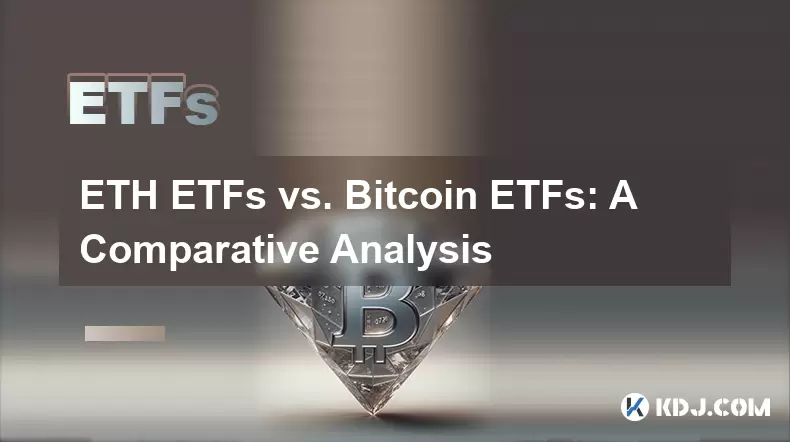
ETH ETFs vs. Bitcoin ETFs: A Comparative Analysis
Aug 07,2025 at 10:56pm
Understanding the Core Concept of Cryptocurrency ETFsCryptocurrency Exchange-Traded Funds (ETFs) are investment vehicles that allow traditional invest...
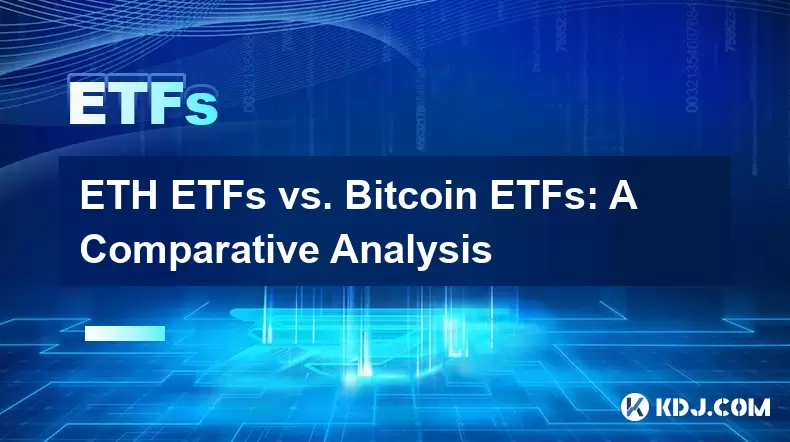
ETH ETFs vs. Bitcoin ETFs: A Comparative Analysis
Aug 07,2025 at 02:08pm
Understanding the Fundamentals of ETH and Bitcoin ETFsExchange-Traded Funds (ETFs) have become a mainstream financial instrument for gaining exposure ...

A Complete Guide to Spot ETH ETFs
Aug 07,2025 at 10:08pm
Understanding Spot ETH ETFs and Their Core FunctionalityA Spot ETH ETF is an exchange-traded fund that directly holds Ether (ETH) as its underlying as...
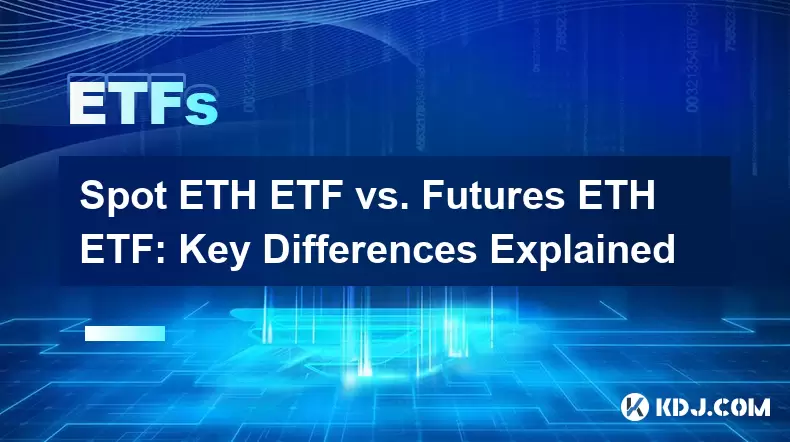
Spot ETH ETF vs. Futures ETH ETF: Key Differences Explained
Aug 07,2025 at 07:31am
Understanding Spot ETH ETFsA Spot ETH ETF is an exchange-traded fund that directly holds Ethereum (ETH) as its underlying asset. This means the fund p...
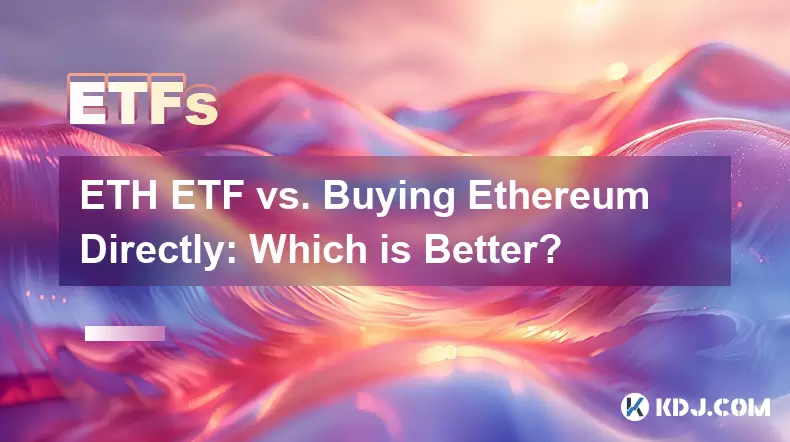
ETH ETF vs. Buying Ethereum Directly: Which is Better?
Aug 07,2025 at 01:36am
Understanding ETH ETFs and Direct Ethereum OwnershipWhen evaluating ETH ETF vs. Buying Ethereum Directly, it's essential to understand what each optio...

The Pros and Cons of Holding an ETH ETF
Aug 08,2025 at 04:36am
What Is an ETH ETF?An ETH ETF (Ethereum Exchange-Traded Fund) is a financial product traded on traditional stock exchanges that aims to track the pric...

ETH ETFs vs. Bitcoin ETFs: A Comparative Analysis
Aug 07,2025 at 10:56pm
Understanding the Core Concept of Cryptocurrency ETFsCryptocurrency Exchange-Traded Funds (ETFs) are investment vehicles that allow traditional invest...

ETH ETFs vs. Bitcoin ETFs: A Comparative Analysis
Aug 07,2025 at 02:08pm
Understanding the Fundamentals of ETH and Bitcoin ETFsExchange-Traded Funds (ETFs) have become a mainstream financial instrument for gaining exposure ...

A Complete Guide to Spot ETH ETFs
Aug 07,2025 at 10:08pm
Understanding Spot ETH ETFs and Their Core FunctionalityA Spot ETH ETF is an exchange-traded fund that directly holds Ether (ETH) as its underlying as...

Spot ETH ETF vs. Futures ETH ETF: Key Differences Explained
Aug 07,2025 at 07:31am
Understanding Spot ETH ETFsA Spot ETH ETF is an exchange-traded fund that directly holds Ethereum (ETH) as its underlying asset. This means the fund p...

ETH ETF vs. Buying Ethereum Directly: Which is Better?
Aug 07,2025 at 01:36am
Understanding ETH ETFs and Direct Ethereum OwnershipWhen evaluating ETH ETF vs. Buying Ethereum Directly, it's essential to understand what each optio...
See all articles

























































































